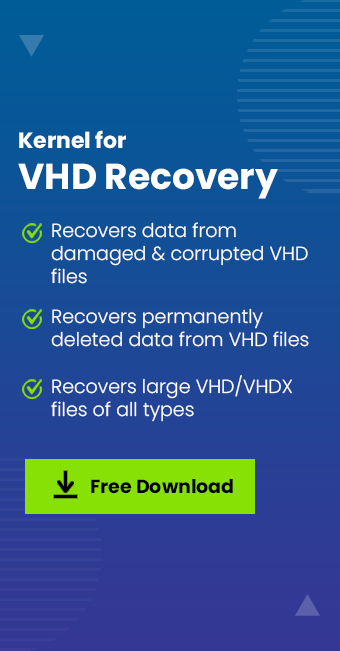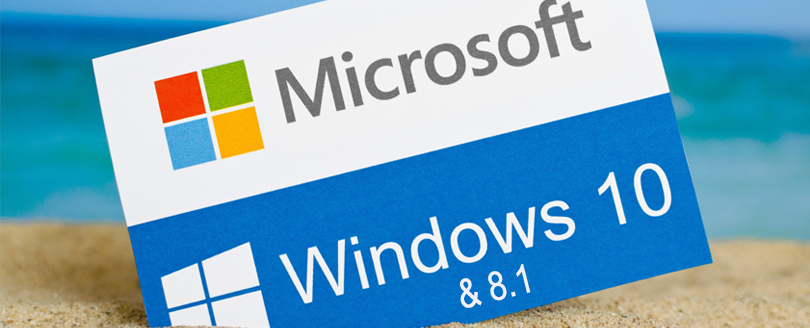Read time 5 minutes
A disk image file encapsulates the complete hard-drive information in the virtual file that mimics the original data present in the physical hard-drive. The VHD file can have the files and folders as they were present in the physical hard drive. The virtual hard disks are capable in hosting the file from various native systems like FAT, NTFS, UDFS, and exFAT. The management of the VHD files can be completed through the VHD API support tool.
As disk image files are present on the host system which are also seen by guest computers as physical hard disks of a specific structure. If a guest computer reads to/writes to the physical hard disk, it redirects the request to the image file with the help of virtual environment. A virtual disk is similar to a physical disk and it is created with specified storage when the image file is created.
Now, let’s do a detailed study on two major file formats -VHD and VMDK. How they are different? What are the important features? What are their advantages and limitations?
VHD (Virtual hard disk) file
The VHD file is Virtual Hard Disk file that clones or contains the data of a physical hard drive like files and folders inside disk volume partitions. A VHD file is traditionally a Virtual Machine hard disk. It was developed by Connectix for a product named Virtual PC. Later Connectix was acquired by Microsoft in 2003 and named it Microsoft Virtual PC.
Features of VHD file:
- The exclusive usage of VHD file allows you to dwell multiple operating systems on a single machine.
- These types of environments are generally used for testing software on different operating system platforms.
- It is a cost-effective process and does not require partitioning one HDD to multiple volumes or installation of another hard disk.
- You can modify the VM directly from the host server, that includes
- File Recovery
- Full backup of the system
- Control over security and antivirus applications
- Transfer of files from VHD to host system
- Conversion of disk images from virtual to physical and vice-versa
- Managing disk image and patching them.
The benefits of using VHD files are as follows:
- Effective resource utilization: The resources can be utilized by IT organizations that require different configurations for running and testing a different set of applications. You can also simply fetch and configure a VHD from the appropriate network location as per the needs.
- Easy Backup and Recovery: You can easily undo and recover the changes done to the data of a VHD/VHDX file that is corrupted and unreadable due to virus infections, deleted or accidentally damaged.
- Supports multiple user accounts: The operating system allows multi-user benefits, you can create multiple users for one operating system. The changes made to one will not affect another as they will be assigned their own version of OS. This is done by creating different VHD during the initial installation of the OS.
- A VHD has a maximum storage limitation of 2 TB i.e. 2040 GB by default.
- The VHD files that reside on NTFS can be mounted
- A size of 512 bytes is internally blocked by VHD
- No resizing is allowed when VHD is live.
A VMDK file format is the container of Virtual Hard Disk drives that are used by virtual machines such as VMware Workstation and VirtualBox. A VMDK is a disk image file that was developed by VMware for their own virtual products. These files are accessed, and its size grows when they are used by VMware’s Virtual Disk Manager.
Features of VMDK file
- A VMDK format clones the physical hard disk of a computer system.
- Its replication provides recovery of off-site VM systems that can further protect RAID within SAN storage.
- Simplicity and convenience of use make VMDK outstanding.
- It can be easily migrated or moved to the server using live migration features.
- VMDK is protected with snapshots and CDP (continuous data protection technology).
- You can get effective results and speed by maintaining VM files on a high-performance SAN storage
- You can recreate, and restart affected VMs with the help of VMDK files.
- When data is lost from VMDK disk, it requires a lot of extra efforts and it is almost next to impossible to recover parts of VM like deleted documents of Word or Excel sheets, etc
- The maximum storage size of VMDK is generally 2 TB, but it got enhanced by VMware vSphere 5.5 to 62 TB VMDK in September 2013.
Recommended solutions to recover VHD and VMDK file formats:
Although, both VHD and VMDK file formats are for virtual environments and possess their own level of limitations and advantages for a user.It becomes a tedious task for a user to recover Lost or Deleted VHD & VHDX Files and VMDK files. Therefore, we recommend using third-party tools offered by Kernel Data Recovery, that can make the process of recovery easy and time-saving. You must try these two tools for VHD Recovery and VMDK recovery named as Kernel for VHD Recovery and Kernel VMDK Recovery Software.
Feel free to mention your queries and doubts in the comments section below.







